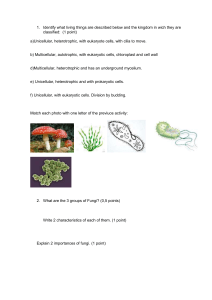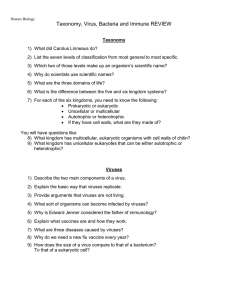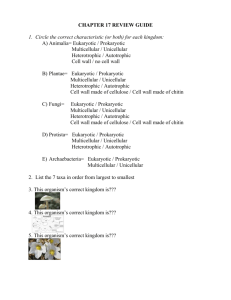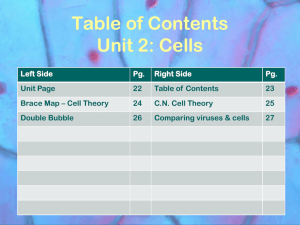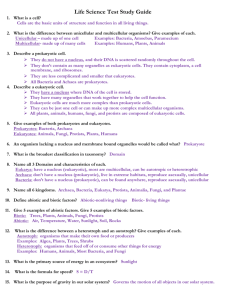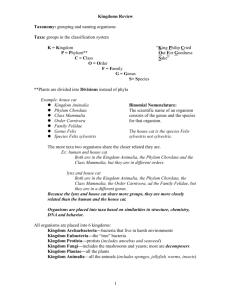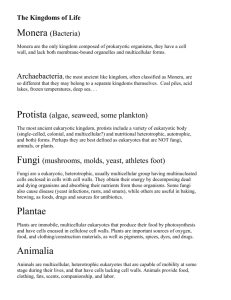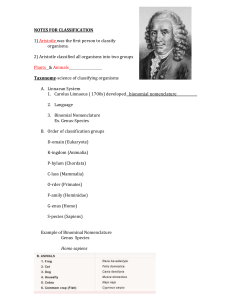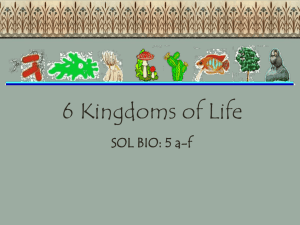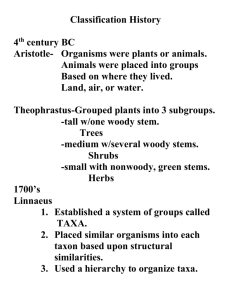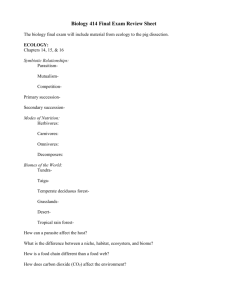1. Briefly explain Aristotle`s philosophy of classification.
advertisement
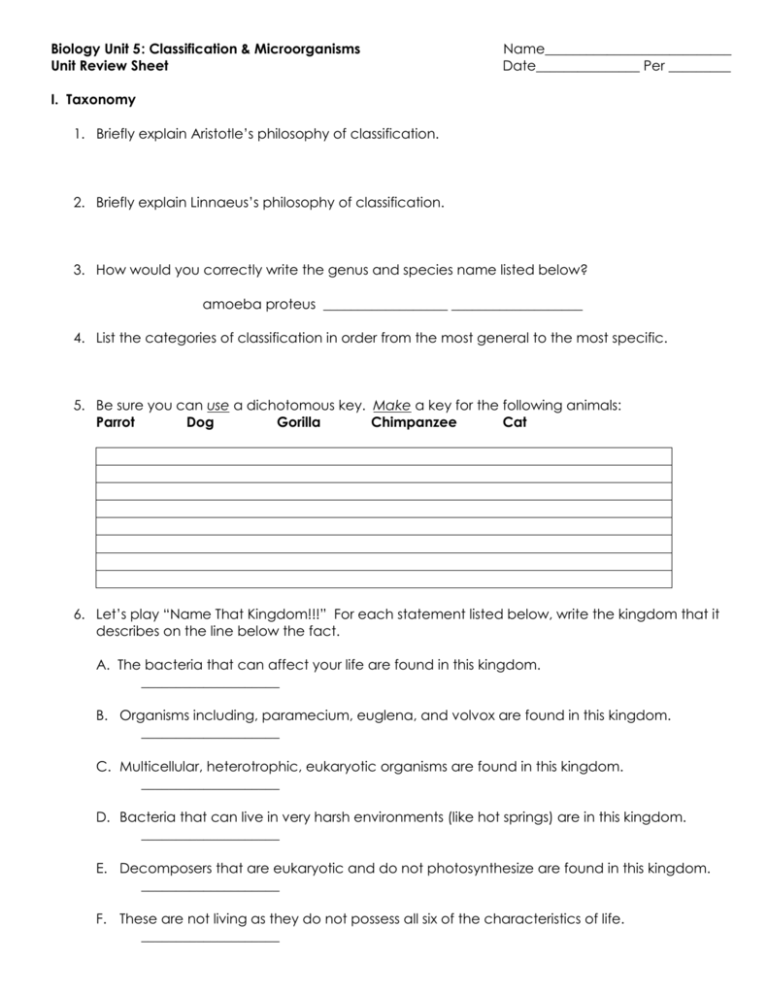
Biology Unit 5 : Classification & Microorganisms Unit Review Sheet Name___________________________ Date_______________ Per _________ I. Taxonomy 1. Briefly explain Aristotle’s philosophy of classification. 2. Briefly explain Linnaeus’s philosophy of classification. 3. How would you correctly write the genus and species name listed below? amoeba proteus __________________ ___________________ 4. List the categories of classification in order from the most general to the most specific. 5. Be sure you can use a dichotomous key. Make a key for the following animals: Parrot Dog Gorilla Chimpanzee Cat 6. Let’s play “Name That Kingdom!!!” For each statement listed below, write the kingdom that it describes on the line below the fact. A. The bacteria that can affect your life are found in this kingdom. ____________________ B. Organisms including, paramecium, euglena, and volvox are found in this kingdom. ____________________ C. Multicellular, heterotrophic, eukaryotic organisms are found in this kingdom. ____________________ D. Bacteria that can live in very harsh environments (like hot springs) are in this kingdom. ____________________ E. Decomposers that are eukaryotic and do not photosynthesize are found in this kingdom. ____________________ F. These are not living as they do not possess all six of the characteristics of life. ____________________ II. Bacteria and Viruses 7. Name each of the bacterial shapes below. a. ___________________ b. ___________________ c. ___________________ d. ___________________ e. ___________________ 8. True or False. If the statement is false, please correct the part that is wrong below the statement. _____ a. Bacteria are eukaryotic, unicellular, and heterotrophic or autotrohic. _____ b. Archaebacteria are generally found in very extreme, harsh environments. _____ c. Antibiotics are used to fight virus infections. _____ d. All viruses are living organisms. _____ e. During the lytic cycle a virus will remain dormant for days, months, or years. _____ f. Viruses can cause warts, HIV, and some cancer. _____ g. Viruses are much smaller than bacteria. 9. Using your notes, create a chart comparing living things and viruses. III. Protista 10. List five members of Kingdom Protista. 11. All protists are (circle): Eukaryotic Unicellular Autotrophic Prokaryotic Multicellular Heterotrophic 12. On each of the organisms below, draw the type of movement that is labeled. Then describe how that type of movement works. Cilia Flagella 13. What might an organism that moves with a pseudopod look like? Draw below and then describe how that type of motility works. 14. Most often, protists (along with bacteria), reproduce (circle): Asexually or Sexually 15. Sometimes, sexual conjugation can occur. What is the advantage of this type of reproduction? IV. Fungi 16. All fungi are: a. multicellular and prokaryotic b. prokaryotic and photosynthetic c. eukaryotic and nonphotosynthetic d. unicellular and photosynthetic 17. Explain how fungi obtain nutrients. 18. Label the chart and describe the functions of each part. a. b. c. d. 19. List three diseases caused by each type of organism. Virus Bacteria Protists Fungus
